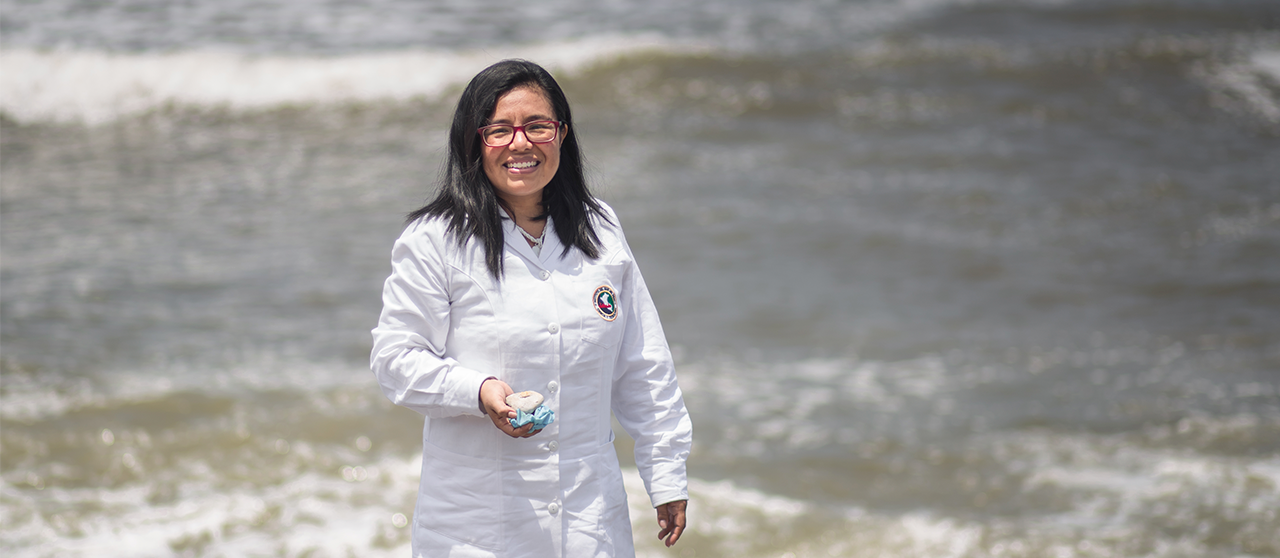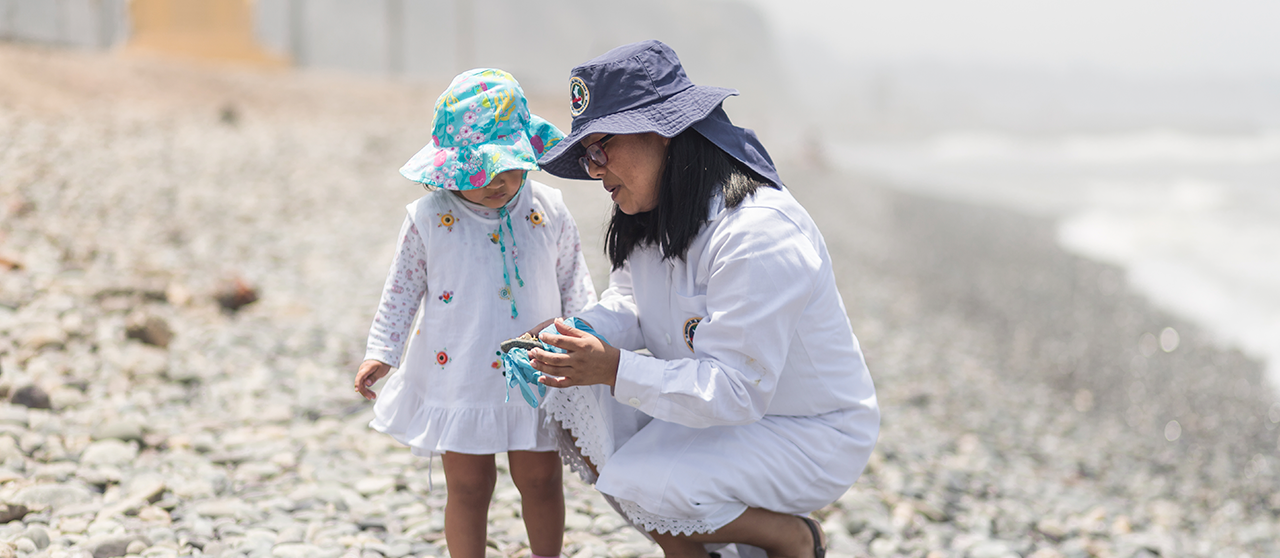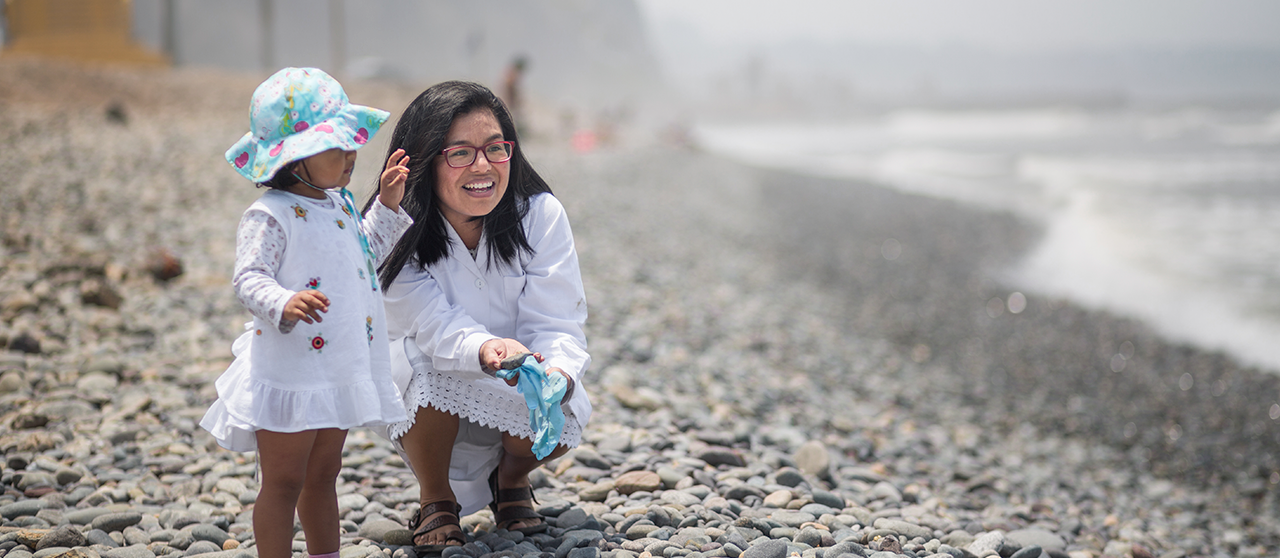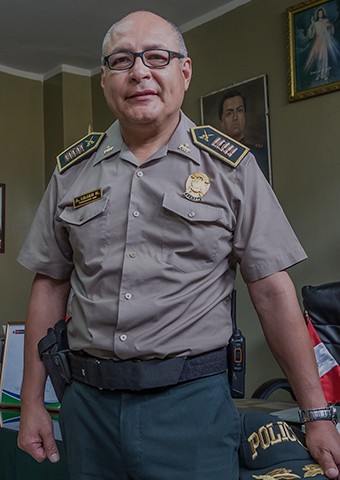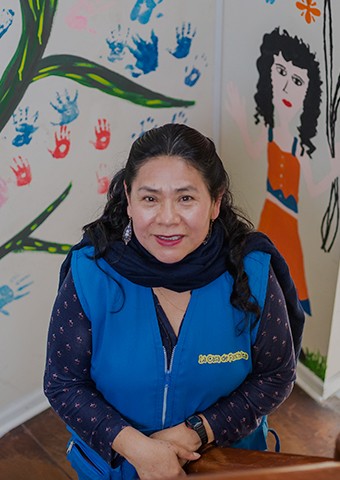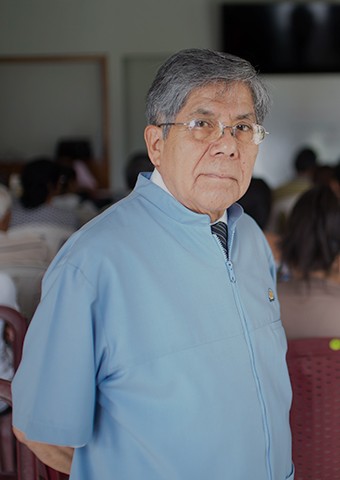“All children like to do research. Human beings are innate researchers”
That is why you were the best of your class.
That was not my intention, I did not want to be the best. But when I was in fourth grade of secondary school and I did not occupy the first place, I got very worried! (laughs)… “Oh, no, I have to give my best”, I thought, because if I was still the first place until graduating from school, I was going to receive a scholarship that exempted me from paying the university’s enrolment deposit. My parents could not afford it; it was 1992, the Fujishock had already started. Can you imagine it? There was no money at all!
Your parents were going through rough times: your father had lost his job and your mother had to improvise a small grocery store in your house.
She worked at the store and he would do any small job to earn some more money.
Did they become your role models for their effort?
Of course, they did! They were always looking for something to do. They forged ahead in spite of the situation.
That encouraged you to be a good student.
It encouraged me to always keep going. The other day while we were celebrating my award, my mom made me remember that once I had 5 out of 20 on a test… because I also had bad marks! She rewarded me (laughs)… She did it because, for her, getting good marks was not an obligation, but a desire.
Interesting!
I think that motivated me to do research in the things I like. That is very important, because if we study something we like, we do it very well!
But you wanted to be a doctor.
I wanted to be a doctor to prove society’s classification wrong. And because, for my mom, doctors were real professionals.
So, you wanted be a doctor for your mom.
She used to tell everybody, since I was a little child, that I was going to be a doctor. That was her goal.
But your score was not high enough.
I took the entrance exam for the best students and I did not make it for a few points. And as I could lose the scholarship, I looked for the degree with the lowest number of applicants: Fishing Engineering.
“Once I had 5 out of 20 on a test and my mom rewarded me (laughs)… She did it because, for her, getting good marks was not an obligation, but a desire”
So, your dream was not to become a fishing engineer, was it?
Not at all.
And how did you fall in love with this career?
Doing research on fish. A teacher, Dr. Norma Chirichigno, took me to her laboratory and asked me if I wanted to clean some bottles. So, I replied: “Yes, I want to see it all”. And I started cleaning the bottles that had fishes in them; I organised them and changed the labels. I loved it.
You were doing the same you used to do with butterflies as a child.
Yes! I gave my collection to my school, because there were too many boxes and I didn’t know where to put them anymore (laughs)…
So, you found your profession by chance.
Exactly… All children like to do research. Human beings are innate researchers.
However, this ability is limited by some parents, schools and churches.
That’s right. Have you watched “The Forbidden Education”? (An Argentinian documentary criticising the traditional school and emphasises non-conventional educational experiences in Iberian America. It affirms that education has been practically designed to make people end up in an office or a factory following orders without thinking or asking questions.
You studied a degree that was not your first choice, but years later it allowed you to receive a prize from For Women in Science Awards in 2017.
There is one more detail. When I was preparing my thesis to obtain my bachelor’s degree, I had the chance to apply for a PHD in Oceanography, and as my mom used to say all the time that I was going to be a doctor, I thought “This is perfect! I might not be a doctor of medicine, but I will hold a doctor’s degree in Oceanography” (laughs)…
You made your mom’s dream come true!
I like doing research and that was a good opportunity, because it was a German scholarship that would cover all the expenses.
How hard is it for a woman to work as a researcher?
In Marine Sciences, not so much. At IMARPE (Institute of the Peruvian Sea), the vast majority are women, mostly because we are in charge of identifying fishes, crustaceans, phytoplankton and zooplankton.
Your mentor, Dr. Chirichigno, is an expert in the classification of fishes.
Yes, she is. She made a taxonomic classification of fishes by size and shape. Her team was full of women (researchers).
You mentioned that, at the beginning, many researchers had left maternity aside due to demands of the career.
Yes, it was very difficult back then. I think that nobody working at IMARPE in the 80’s had children.
Regina, your daughter, is about to turn 2 years. You decided to be a mother in spite of the career’s background.
I have met other scientists that are also mothers and have managed to balance their responsibilities. I think it’s possible… I worked for 11 years in the Ocean Modelling Centre of IMARPE, addressing the prevention of La Niña and El Niño phenomena; in 2012, I was transferred to the Biodiversity Department and then to the Contamination Department two years later. I was offered to do a research on microplastic pollution and I liked that idea because it is a topic related to Environmental Education.
You wanted to teach.
That’s right! I wanted to take my scientific work to classrooms. In Concepción (Chile, where she studied the doctor’s degree), I participated in a programme called “A Thousand Scientists, A Thousand Classrooms”, thanks to which I could teach at a private and a national school. It was very interesting; the programme’s objective was to encourage students to be ask themselves more questions. And, in my case, the message was: Do not use plastic, because it ends up in the sea and it turns into microparticles, which affect all the ecosystem.
“The accumulation of plastic inside us throughout our lives is equivalent to two slices of pizza”
Are we talking about waste whose size is in…
Microns (one thousandth of a millimetre). We worked in the beach with particles of five millimetres or less; now we are working on something else with microparticles that can only be seen through a microscope. Why do we do it? Because there are organisms in the Peruvian sea, such as the phytoplankton and zooplankton, that can absorb those microparticles into their systems.
That implies that we would start eating fish with plastic inside them.
In fact, according to researches in the United States, the accumulation of plastic inside us throughout our lives is equivalent to the size of two slices of pizza. They are microparticles that we cannot see, so we drink them when taking coffee on a Styrofoam cup, for example. In some countries, the use of that material has been forbidden, but not here because it is very cheap.
Stomach acid cannot dissolve them?
No, and that is why we keep accumulating it. In USA, it was proved that it produces cancer. The heat of any kind of food or beverage makes the Styrofoam to turn into microparticles and mix with what you are having, but you don’t see it. This is why we teach students to be aware of that.
This was the topic that made you apply to the For Women in Science Awards in 2017.
I was told in the office I should apply. I thought I didn’t qualify for it, but they proved me wrong. 40 women applied, 23 of which classified, and on 29 January I received a mail that said “You are the winner”.
What did it mean to you?
It was a responsibility, because now I must spread the message that science is free thinking and accessible for both boys and girls.
And your mother must be the happiest woman…
Of course, she is! (laughs)...


